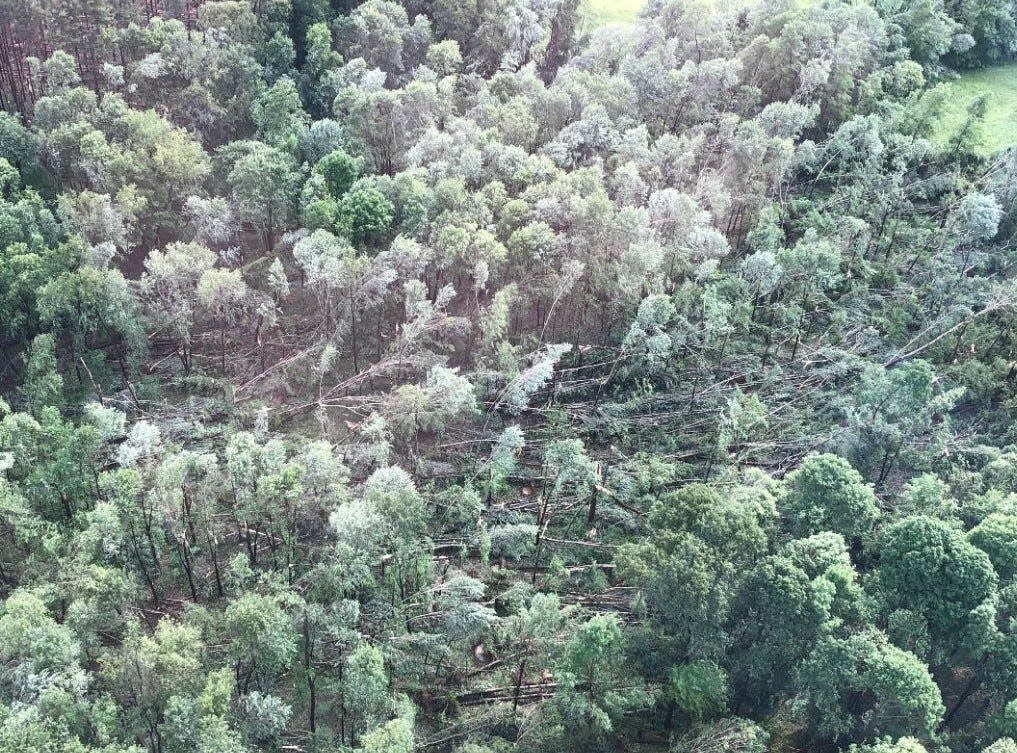Clearcut can reset a forest toward a healthier future for trees and landowner
This week in the farm column I decided to talk a bit about clearcuts and how they can be used in forest management in Ohio.
Frequently in our society there tends to be a negative reaction when you hear the word “clearcut.” That term tends to be associated with destruction of forests and conversion of land to another land use. However, a clearcut is very different from land conversion.
Land conversion is the process of taking a forest and converting it to something like a housing development or a business park. This is not a clearcut, though. A clearcut is a silvicultural harvest technique that creates an even-aged, early successional forest.
So why would someone want to use a clearcut as a management tool in their forest?
One of the big reasons a forester might recommend you use a clearcut is because the forest has been mistreated and it needs to be reset. If the forest has had all the quality timber removed in a high-grade harvest, the best option may be to start over entirely.
A high-grade harvest is never a good option as it removes all the best trees and leaves the rest of the trees. Unfortunately, we see that style of harvest frequently in Ohio. You will grow the trees that are left behind. So, if all the poor-quality trees are left, you will grow more poor-quality trees. A forest in this condition could take a century to recover if it recovers at all. Therefore, sometimes the best option is to cut all the trees and start over.

Clearcut also used in shade management
Another reason to do a clearcut is if you want to manage for trees that are shade intolerant. Every species of tree has specific light conditions in which they prefer to grow. Species including black walnut, yellow poplar, black locust and black cherry are all shade intolerant.
Black walnut is a very valuable timber in Ohio, and it can be difficult to get good regeneration of this species in the understory or midstory of a forest. Therefore, when you harvest the black walnut, there often aren’t more black walnut trees to replace what has been removed. So, to have the correct conditions to grow more black walnut trees, you may need to do a clearcut.
It is worth noting that frequently you will need to have a clearcut that is at least 1.0 to 1.5 acres in size to get enough sunlight to grow shade intolerant species. The clearcut can be smaller than that depending on the height of the adjacent trees and the aspect of the terrain.
Creating a specialized wildlife habitat
My favorite reason to recommend a clearcut harvest is to create specialized wildlife habitat. In Ohio, we had a lot of marginal farmland that was allowed to return to forest in the 1950s and 1960s. At this time, there were a lot of early successional forests that were providing valuable habitat for a variety of wildlife. Now, Ohio has a lot of mature forests with very little early successional forest.
Wildlife species like white-eyed vireos, blue-winged warblers, chestnut-sided warblers, American woodcocks, northern bobwhite, and eastern cottontails are reliant on this type of forest. The bird species especially are very dependent on the early successional forest. Without forests from 5 to 15 years of age, there will not be breeding populations of these birds. Many other species that tend to be generalists like white-tailed deer also will use these young forests.
Recent clearcuts are high risk areas for infestations of non-native invasives plants. Most invasive plants will flourish in areas of sunlight, so it is essential to have your invasive plants under control prior to doing the clearcut and introducing sunlight to the ecosystem. Additionally, you may want to treat some of the tree stumps with herbicide immediately after the clearcut if it is a tree species that you may not want to grow.
If the forest had northern red oak, yellow poplar, and red maple growing and you only want to grow northern red oak and yellow poplar in the future. It would be a good idea to treat the red maple stumps with an appropriate oil-based herbicide. Red maple grows prolifically and can take over quickly if allowed.
A professional forester can help you identify an area on your property to create some early successional forest. Additionally, there are practices through the USDA Environmental Quality Incentives Program that can help you create and maintain early successional forest. Clearcuts are an under-used tool in our part of Ohio but can be an exciting opportunity to create a dynamic ecosystem on your property.
Jake Peer is a consulting forester with Peer Family Forestry Consulting.
This article originally appeared on Ashland Times Gazette: Misconceptions about clearcutting a forest; many good reasons to do so
